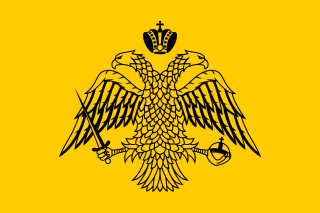Maximos Kausokalybites
Maximos Kausokalybis (Greek: Μάξιμος Καυσοκαλύβης; died 1365 or 1380; also spelled Kafsokalyvis, from "of the burning hut"), also known as St. Maximos the Hut Burner, was a hesychast monk who lived on Mount Athos in Greece. Some of Maximos' writings on prayer and ascetism are included in the Philokalia.[1]
Maximos Kausokalybis | |
|---|---|
| Died | 1365 or 1380 Mt. Athos |
| Venerated in | Eastern Orthodox Church |
| Feast | January 13 |
Maximos lived an austere life, mostly as a recluse in crude shelters, moving from time to time to seek further seclusion. His habit of burning his hut at these times resulted in his nickname "the hutburner." Before settling at Mt. Athos, Maximos spent one year in Constantinople acting as a "holy fool." At Mt. Athos, he was a close associate of another renowned hesychast monk, Gregory of Sinai. In spite of his desire for seclusion and obscurity, four writers later wrote vitae on his life and teachings. These include The Life of Maximos by Theophanes and a vitae by his disciple Niphon Kausokalybites.[1]
The stories of his life recount that as a child he was devoted to the Virgin Mary and gave his food and clothing to the poor. When his parents arranged his marriage at age 17 he instead moved to Mount Ganos, where he became the student of an elderly monk. Around this time he began his life of austerity, sleeping on the ground, staying awake for long periods, and fasting. After his spiritual father died, he went to Constantinople, where he pretended to be mad while living in the gateway of a famous church.[2][3]
A dream led him to an ascent of Mt. Athos, where he spent three days, ending with a vision of the Virgin Mary, who told him to remain on Mt. Athos. Thus began about ten years of wandering, including his frequent hut burning, ending with a permanent and very austere cell.[2]
During his life, he was held in high repute as a holy man and spiritual adviser, admired for his austerity, and a reputation for clairvoyance, prophecy, healing, and exorcizing demons. Legend had him seen flying in the air, turning seawater into drinking water, and more. Before his death, he moved to another location, where he was buried at his request in a grave that he dug himself. The present-day skete of Kapsokalyvia is named after him.[2]
He is celebrated by the Eastern Orthodox Church on January 13.
See also
References
- Stephanos Efthymiadis (1 October 2011). The Ashgate Research Companion to Byzantine Hagiography: Periods and Places. Ashgate Publishing, Ltd. pp. 185–188. ISBN 978-0-7546-5033-1. Retrieved 7 January 2013.
- René Gothóni; Graham Speake (30 March 2008). The Monastic Magnet: Roads to and from Mount Athos. Peter Lang. pp. 58–61. ISBN 978-3-03911-337-8. Retrieved 8 January 2013.
- Cavallo, Guglielmo (1997). The Byzantines. University of Chicago Press. p. 38. ISBN 0226097927.
